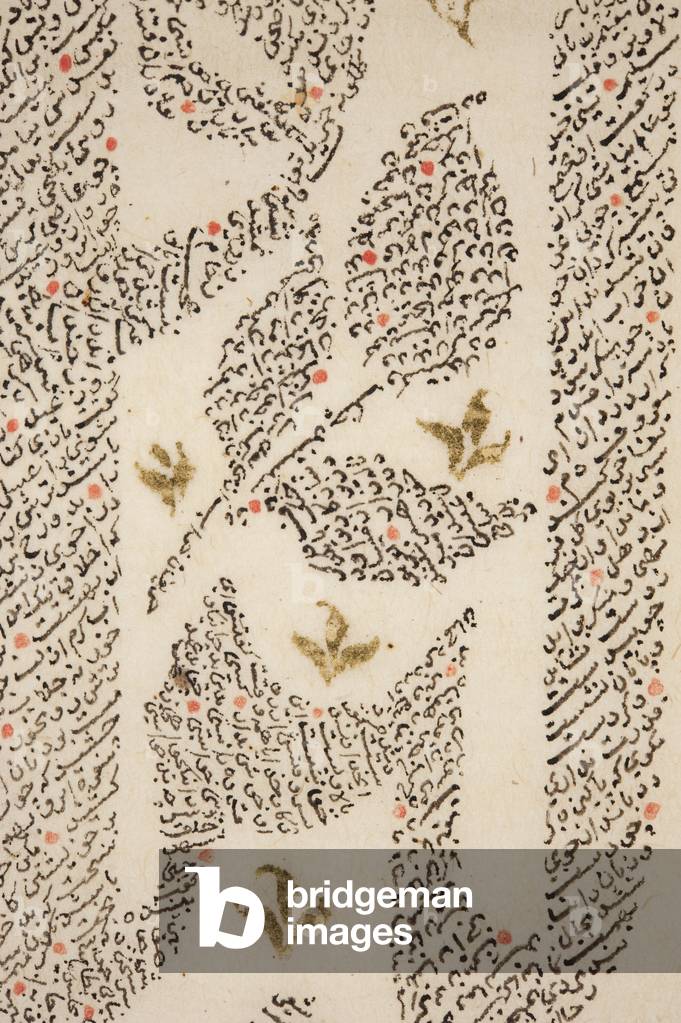
AND2919704
Saadi Shirazi (1210-91/92), Persian poet. The poem has 10 sections each dealing with a different topic such as humility, good government, love, wisdom and justice. It begins with panegyrics and the whole is dedicated to Atabak Abubakr Sa'd ibn Zangy (1231-60), the ruler of Shiraz. This copy was written for George III, King of Great Britain (1760-1810), in various Persian scripts, much in minute writing within the large letters and leaves of the design on the roll. The name of the copyist, Mir 'Ali Amjad Khan, appears at end.Also a three page description written by Sir Charles W Rouse Boughton, Secretary of the Board of Control (of India), dated 15 April 1790, and referring to the manuscript shown to him by Henry Dundas, later 1st Viscount Melville, influential member of the board of Control from its inception in 1784 and president in 1793, as well as a letter to Principal Haldane from Lord Melville, Melville Castle, 18 January 1847, enclosing manuscript for deposit in Library and also enclosing letter from CW Rouse Boughton, Corney House, 15 April 1790, giving description of manuscript.
DC











































































